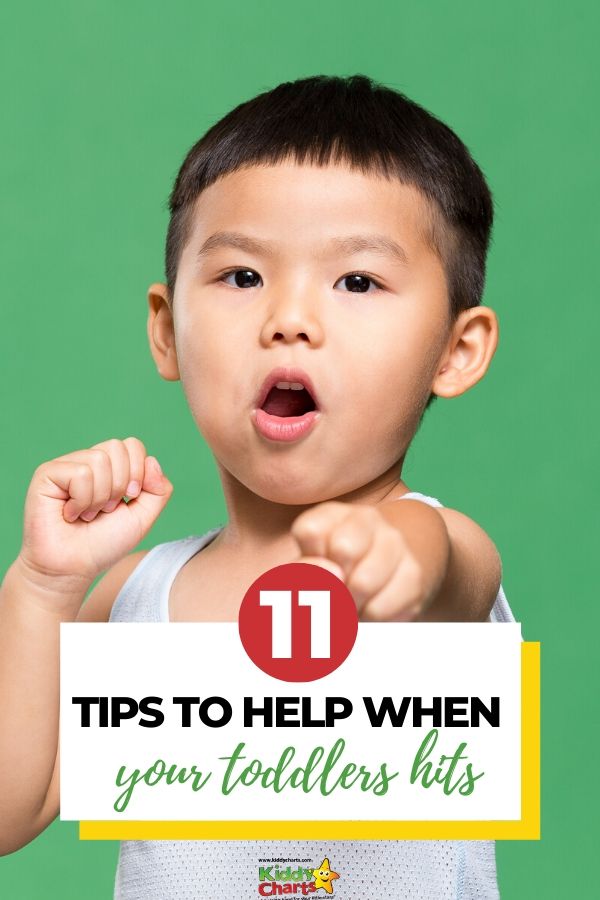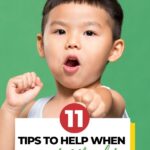Have the days gone when you seen your son or daughter as a little angel and instead, in their place is a little monster who hits and lashes out? Well, you may be surprised to know that anger and aggression, which leads to toddler hitting and aggressive toddlers is a normal part of a child’s development.
It is a means of communicating what is going on in their world, their way of letting us know if something isn’t feeling right for them.
This is especially true of children before they start to speak. Before a child speaks, it can be difficult for them to express their needs clearly, they often become frustrated, especially if they feel they are not being understood. This can cause them to lash out.
This can happen in any environment they are in, be it nursery, with grandparents or at home. It is also common for older children who can speak, but are not yet able to communicate properly as their brain hasn’t fully developed to allow them to do this.
However, this is only normal to a certain extent, it is not good if they are continuously using it and hurting other people, especially other children, or if they are using it as a means of getting attention. Toddler hitting is a learned behaviour and you can teach them to stop. It is good parenting to tell your child that it is not acceptable to hit anyone. Here are some ways in which you can challenge and change this behaviour.


11 tips to help when your toddlers hits
1. Show them other ways to express their feelings
If your child is very little and can’t yet speak try then teach them how to show you what they need.
For example a child may scream for a drink and lash out if they don’t get one. If you recognise this then encourage them to get your hand and take you to the kitchen and point and say ‘drink’, by doing this you are firstly showing them that you want to understand them, you are encouraging them to speak and are also fulfilling their needs.
If your child is older and is lashing out, then a great way of expressing how they are feeling is to get creative. Simply drawing and painting can encourage them to express how they are feeling without the need for lashing out.
When they are older, it is also really effective simply just to talk. Create a safe environment, give them a hug and simply ask them what is wrong. If they can’t speak about it then drawing is a great tool.
In my previous work as a children’s counsellor, we would always use drawing in our play therapy. I am by no means saying your child needs therapy, just simply it is a great tool for expression, without talking. Simply give them some pens and paper or even a large roll of wallpaper and some paint and let them draw it out.
2. Set boundaries and be consistent
Children need boundaries and consistency to keep them safe and to feel safe. Be very clear and firm with what behaviour is acceptable. If your child hits, you simply take their hand and say ‘don’t do that’ in a firm voice. Then move onto whatever activity you were doing.
If they are old you can explain a little more to them, ‘Don’t do that as it hurts Mummy, what did you do that for?’ By asking them you are helping them to recognise themselves why they hit you and if they think about this enough it often helps them to stop next time.
3. Stay calm
Remember you are the adult and don’t blow your top! Toddler hitting is something that Helen, the KiddyCharts owner, has experienced. And I KNOW she found it very hard to keep cool sometimes…
It does hurt when we get hit, even if we are the big guy! It’s good to show your child they have hurt you and you are upset, as they eventually need to accept responsibility for this and know that there are consequences to their actions. Reinforce this with letting them know it is unacceptable in a calm manner. If you are fuelled with anger or aggression then this will only encourage your child to remain angry too.
Check out our post on how to keep calm for a few tips here.
4. Do physical activities
Children, especially little boys (due to surges in testosterone) need to be active. Being active is a great way of allowing them to get rid of any built up steam and to literally ‘work it off’. Take them to the park, beach or even just let them hang out in the garden with a football or some skipping ropes. We know as adults how beneficial exercise is to our mood and children are no different. You are ensuring they stay healthy and fit too.
5. Have a cool off area
Make sure there is an area in your home that your child can go to for some alone time. Sometimes children, as adults do, need some time alone. It may be simply that they are a little fed up of being with the people around them and need some space.
If they have their own bedroom then this is ideal. Obviously make sure there is nothing in there which can hurt them and give them the option to play their alone and have some time out. Maybe encourage them to just sit reading. You may need to sit with them for a little while at first but eventually they will be happy to be left alone.
6. Avoid too much TV
We all know that TV is not a relaxing activity and stimulates the brain. When children watch too much TV their brains are often stimulated so much that they need a means to express this and let it out. By cutting down on TV and doing more relaxing activities such as drawing and reading, your child won’t have absorbed so much of this stimulation and will be less likely to hit out.
7. Reward good behaviour
As parents we can often feel that all we are doing is telling our children off! It’s important for them, and us, to know that they are not a ‘bad’ person and are capable of doing good things. When they are good make sure you let them know how well behaved they have been and maybe even offer rewards for very good behaviour.
For example, if they tidied their room without being asked too or they helping their younger sibling to do an activity. This will reinforce to them that they can get attention in ways other than hitting and which will make them feel good about themselves also. Try one of KiddyCharts reward charts to help with this; you can choice which behaviours you would like to reward, tailoring the chart to your child’s particular needs.
8. Saying sorry
Your child needs to learn that when they do hit someone they are hurting the person they are hitting and that this is not acceptable. Part of this is to encourage them to say sorry. This will show them that they have done something wrong and they need to apologise for it.
9. Be careful of the word ‘no’, use simple words to explain.
Older children especially aren’t satisfied with the word ‘no’ and when they hear it too many times it can make them misbehave. Older children often need an explanation about why they can’t have or can’t do something to stop them from tasking it personally! So when they hit you instead of just saying no, say why it is not acceptable behaviour as well.
10. Show child how to touch without hitting, stroking their hand, face or hair etc
Sometime children think the only way they can express how they feel is to hit out; so toddler hitting begins. It is important to learn them that there are others way to be ‘physical’ with people and this can be positive. Spend time at baby/toddler massage and allow your child to massage you too. This is great one-to-one time with your child and not only will it help to build your relationship with them but will show them there are other ways to be physical, ways which make them feel good too!
11. Think about why they are hitting?
One of the main reasons children hit is to get attention. If this is the case then they are lacking attention in other areas of their life and this needs to be given some thought.
How can you improve this?
How can you ensure your child gets the attention they need?
If this is the case for you, it does not mean you are a bad parent. Maybe you are just unsure how to give your child attention as no one has shown you how to do it! There are people who can help you with it. Please feel free to send me a private email if you’d like to talk about this more.
Remember that when children hit out it is often their way of communicating something. By following the above we can help them to express themselves and encourage them to deal with their emotions in ways other than hitting. At the same time we are also teaching them how to behaviour in a way which is acceptable in other environments too such as school and when at a friend’s house.
If you feel you are not coping with your child and their hitting is getting out of control then you can speak to their health visitor or GP who should be able to help.
If you are struggling with toddler hitting, then do try one of our behaviour charts. You can even follow our five top tips for making sticker charts work to give you that little bit more help.
Have you experienced hitting in your toddlers or older children? Do let us know? How did you deal with it? Did you seek help, or did you manage it on your own? Please comment.
This is another guest post from Maria Albertsen as part of our series of Thursday Thoughts for Parenting Behavioural Challenges.I am sure it’ll give you some great tips.



Child Counseling
Monday 22nd of February 2016
kids who have a hard time expressing their feelings go for hitting and sometimes its really hard to handle such kids.This spectacular site provide great help indeed.Nowadays kids become impatient and hyper but this article suggest very useful and practical tips.
Josh Thyer
Thursday 26th of November 2015
We have had some problems with this recently, thanks for the article its given us some ideas.
eric
Tuesday 5th of November 2013
Children hit for several reason. We may nit aware that they may imitate it from us. That is why you better never hit children because they will think that doing physical punishment is acceptable act. Need a lot of patience and continuous explanation to make them understand there are a lot of other great ways to express their feeling instead of hitting
The Tax Father
Sunday 21st of October 2012
We have a biter who seems to use it as a weapon in acquiring toys etc from his piers. All the above seem to help but the main issue is other parents who see him as the spawn of the devil! This can result in the parent feeling ostracised from the rest of the group. Maybe such behaviour charts would be good at mother and toddler groups which would encourage the groups to work together to overcome "antisocial" behaviour?
Clare Allen
Thursday 18th of October 2012
Thanks for this!! We were just discussing how best to handle this and you've given me lots of ideas
Helen
Thursday 18th of October 2012
Thanks for your comment. And so glad you found it useful.